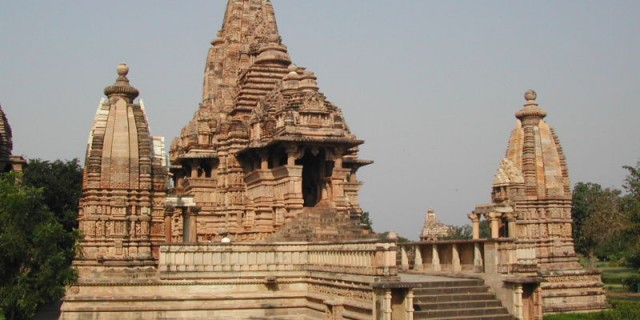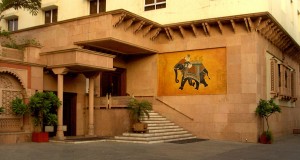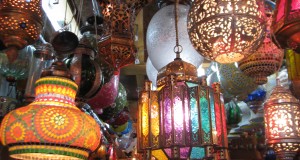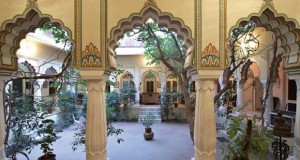Review Overview
3
Summary : The famous temples of Khajuraho are a major tourist magnet, partly because, situated in the dry, hot plains of Madhya Pradesh and miles from anywhere
The famous temples of Khajuraho are a major tourist magnet, partly because, situated in the dry, hot plains of Madhya Pradesh and miles from anywhere, they have an alluring quality of romantic isolation; partly because they include the most sublimed , sensuous and erotic temple sculpture in India; and finally, because they are remarkably intact, their remote situation having spared them the customary desecra tions inflicted by Muslim invaders on other northern temples.
Over 80 temples, of which 22 survive, were built by the mighty Chandella dynasty, which claimed descent from the legendary moon god Chandra. The bulk of them appeared in a single, sudden burst of creative and religious energy, between the mid-10th and mid-11th centuries. The much reduced Chandella kingdom lasted almost 500 years; their capital at Kalanjar having fallen in 1203 they remained at Ajaygarh until the early 18th century. When their ancient religious centre of Khajuraho was deserted is not known. But the sculptures live on. Though the ‘dirty postcard’ touts at Delhi would have you believe otherwise, Khajuraho is not a place for the thrill-seeking voyeur. It is, rather, just a frank expression of joy in life, a remarkable symphony in stone erected in praise of love and women. And the purpose of the sculptures has been an object of discussion and academic debate since the temples were ‘rediscovered’ by Capt T. S. Burt in 1838. The skill and the vivacity of the carvings themselves have rarely been equalled.
Khajuraho today is a small peaceful village of some 5000 inhabitants. Many of them continue to tend their fields and animals. It comes as a real surprise to many visitors to find such a green, well-maintained garden environment, though even the park benches and the pastoral setting can’t take your mind off the heat. Khajuraho has an extcreme climate—very hot in summer, very cold in winter. The most comfortable months are November to February. If you don’t like crowds, come in March. The special Dance Festival, which takes place every year (end February /early March ever seven days is a marvellous opportunity to see some of India’s top dancers and musicians performing in an original setting (the floodlit temple grounds) for a urinal cost of between Rs100 and Rs10 per seat.
ARRIVAL/DEPARTURE
Air India Airlines flies daily between Khajuraho and Agra (Rs767), Delhi (Rs1031) and Varanasi (Rs767). 1C408 continues from Varanasi to connect with Kathmandu. A new vice-weekly flight links Khajuraho with Bombay.
Rail khajuraho has no direct rail connections. The nearest station is Satna, 117 km (74 miles) east of Khajuraho, from which there are regular connections with Delhi, varanasi, Lucknow and Calcutta. Shansi, 176 km (109 miles) to the west, is connected to Delhi, Agra, Gwalior and Bhopal by the superfast Shatabdi Express (see p.109).
Road There are daily buses to Agra and Delhi, and to Shansi (for the rail connection to I Delhi; see p.109). There are also regular local buses to Chhatarpur and Satna.
WHAT TO SEE Khajuraho is small enough to see in a day, and this is exactly what most visitors do. rhey fly in from Delhi or Agra in the morning and continue to Varanasi the next day (a taxi from the airport is Rs50). But a few short hours simply aren’t enough. You’ll need at least two days here, to see the temples at leisure and to appreciate fully the Inglorious sunrises and sunsets.
There are three groups of temples. The larger Western Group is conveniently near the modern part of town, with its hotels, restaurants, shops and bus-station. The unkempt but interesting Eastern Group is 1.5 km (1 mile) away in the old village. t he Southern Group is 4 km (2 1/2 miles) below the new town. You can walk to all these places, or tour round by cycle available opposite the bus-stand or from many of the hotels for approximately Rs100 per day. If it’s too hot, or you’re short on time, it’s a good idea to hire a taxi (Rs10 per half-day) or a rickshaw.
EATING OUT Jass Oberoi’s Apsara restaurant offers good buffet lunches (Indian, Chinese and Continental) for about Rs450. The favourite local-style dish is rahu—fresh river-fish, served with special sauces. It’s not on the menu though—you have to advance-order. The Chandella’s Coffee Shop is reasonable (Rs100) but not exciting. Meals at the Papal are superb—two can have an excellent meal for around Rs80. New Bharat Restauran , down the road from the hotel, does pure vegetarian food only; it’s very cheap and very good. The ‘Swiss-run’ Raja’s Cafe is a popular meeting place, but meals are mediocre.
GENERAL INFORMATION The Government Tourist Office (tel 2047), opposite the Western Group, is open 9 am to 5.30 pm weekdays, 8 am to 42 noon Saturday, closed Sunday. Information is pool , but come here for maps and to book guides. Khajuraho now has a proper Guido Association—approved guides speaking German, Spanish, Japanese, Italian, French and English. They charge Rs50 half-day, Rs100 full-day for up to four people. The ASI guide to the temples is an excellent introduction costing Rs6, available at the entrance to the Western Group. A recently published study of Khajuraho: Divine Ecstasy by a young academic, Shobita Punja (Viking 4992) gives a scholarly yet highly readable survey of the many interpretations of Khajuraho, the temples and their Sculpture, and puts forward an exiciting and original theory as to the chandella’s original concept.
post office is housed in a charming, rustic old building, near the bus-stand. It’s open 9 am to 5 pm Monday to Saturday, closed Sunday. Indian Airlines have an office near the Chandella Hotel. State Bank of India have a branch opposite the Western Group of temples.





